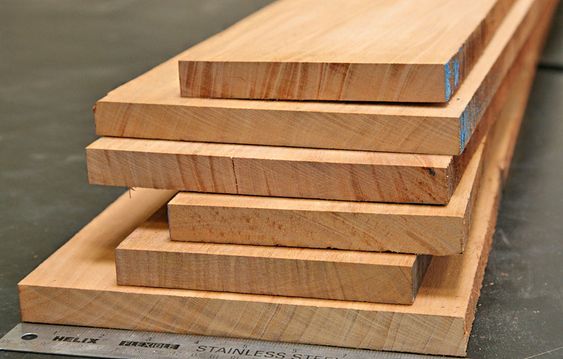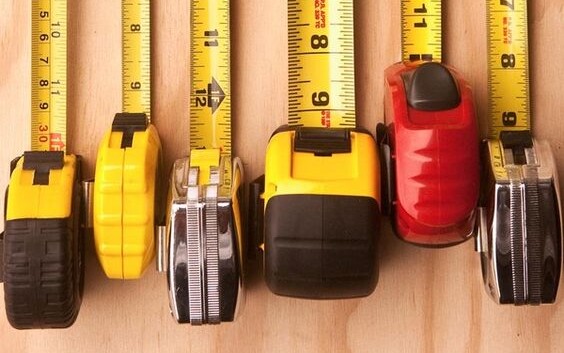
Key Takeaways:
- Understanding Lumber Grades: Lumber grades determine the quality and usage of wood, affecting structural integrity.
- Identifying Common Lumber Defects: Knowing what defects to look for helps in selecting the best pieces and avoiding issues.
- Selecting the Appropriate Wood Type: Different projects require different wood types, each with unique characteristics and uses.
- Importance of Measuring and Marking: Accurate measurement and marking are vital to ensure precise cuts and alignment.
- Incorporating Suitable Woodworking Joints: Choosing the right joints contributes to the durability and appearance of your project.
Table of Contents
Understanding Lumber Grades
What are Lumber Grades?

Lumber grades are standards developed by organizations like the National Hardwood Lumber Association (NHLA) to rate the quality of wood. These grades consider factors such as knot size, straightness of the grain, and the amount of usable material.
Tips for Selecting Lumber Grades

- For structural projects like framing, consider construction grade lumber such as ‘Standard’ or ‘Stud.’
- Cabinet and furniture projects benefit from higher grades like ‘Select’ or ‘FAS’ (Firsts and Seconds) for their clear and defect-free surfaces.
Identifying Common Lumber Defects
Lumber defects can diminish the strength and visual appeal of your woodwork. While some defects add character, significant flaws can compromise the integrity of your project.
Table of Common Lumber Defects
| Defect Type | Description | Impact on Project |
|---|---|---|
| Knots | Circular imperfections where branches were | Can weaken wood if large or loose |
| Checks | Splits along the wood grain | Can grow and compromise the wood |
| Warp | Twisting or bending of the lumber | Makes accurate cutting difficult |
Tips for Spotting Defects
- Inspect all sides of the lumber for consistent color and grain.
- Avoid lumber with large or numerous knots in load-bearing areas.
- Check for straightness by looking down the length of the board.
Selecting the Appropriate Wood Type
Selecting the right wood type for your project is crucial for both appearance and functionality. Learn about different wood types and their best uses on our detailed guide.
Factors to Consider

- Hardwoods like oak and maple are durable and ideal for furniture.
- Softwoods, such as pine and cedar, are good for outdoor use and framing.
Measuring, Marking, and Layout
Precise measurement and marking are non-negotiable for high-quality woodwork. For newcomers, it’s recommended to familiarize yourself with measuring and marking techniques to enhance the accuracy of your work.
Best Practices for Measuring and Marking

- Use a high-quality measuring tape and square for precision.
- Make crisp, clear marks with a sharp pencil or marking knife.
Integrating Effective Woodworking Joints
Woodworking joints determine the strength and the overall longevity of your construction. Explore the different types of woodworking joints and when to apply them for optimal results.
Selecting Joints

- Dovetail joints are excellent for drawer construction.
- Mortise and tenon joints provide strong connections for table legs and frames.
Remember: Quality lumber selection is the foundation of carpentry. Prioritize understanding lumber grades, identifying defects, selecting appropriate wood types, and incorporating precise measuring and joint techniques to elevate your projects.
FAQ
How do I know which lumber grade I need for my project?
Select lumber grades based on the project requirements. For structural projects where strength is important, such as framing, look for higher numbered construction grades like ‘Standard’ or ‘Stud’. For projects where appearance is important, like furniture, opt for ‘Select’ or ‘FAS’ grades for their clearer surfaces and minimal defects.
What are the most common defects to look for when selecting lumber?
Key defects to be aware of include knots, which can weaken the wood if they are large or loose; checks, or splits in the wood that can compromise its structural integrity; and warps, which include any bending, twisting, or cupping of the boards that make accurate cutting and assembly difficult.
Can wood defects be worked around or repaired?
Some wood defects can be worked around by cutting the lumber to eliminate them or by placing them in less critical parts of your project. Others, like small cracks or knots, can be filled or stabilized with wood filler or epoxy. However, significant defects should be avoided for critical structural components.
Why is it important to select the appropriate wood type for my project?
Different wood types have unique properties and uses. Hardwoods like oak are durable and have a fine grain, making them suitable for high-wear furniture. Softwoods like pine are softer and easier to work with, making them great for projects that require a lot of shaping or for outdoor projects where the wood will be painted or stained for protection.
Does the way I measure and mark lumber impact my final project?
Accurate measurement and marking are crucial for ensuring that pieces fit together properly and the project is structurally sound. Even a small error can propagate through your project, leading to gaps or misaligned parts. Use precise tools and take your time during this step to prevent mistakes.
What is the best way to learn about woodworking joints?
Learning about woodworking joints is best done through both study and practice. You can read about different joints and their applications in carpentry resources or explore our comprehensive guide on woodworking joints. Hands-on practice is essential; start with simple joints and progress to more complex ones as you build your skills.
The selection of quality lumber is an intricate process that factors in the intended use, desired aesthetics, and the necessary structural qualities of the wood. Proper grading, defect identification, and knowledge of wood types are all vital components for optimal lumber selection.
Coupled with accurate measuring and marking and the correct application of woodworking joints, these factors form the bedrock of successful and lasting carpentry projects. For further insights into various carpentry methods and materials, be sure to peruse related topics on our website.

